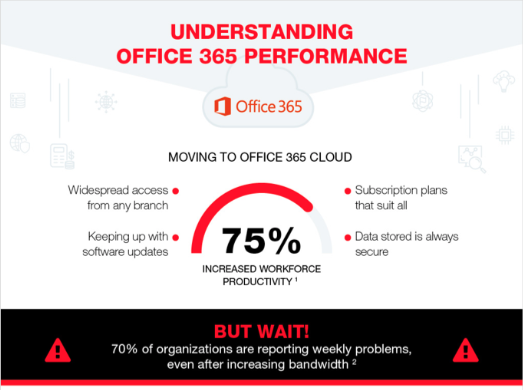 This article was originally published on Networkworld.com on July 19, 2018 by Mark Casey, CEO of Apcela.
This article was originally published on Networkworld.com on July 19, 2018 by Mark Casey, CEO of Apcela.
Communications hubs emerge as a bridge to hybrid IT Bridge legacy and cloud environments with high performance cloud gateways.
Adoption of hybrid IT for delivery of applications across legacy enterprise data centers, and increasingly cloud SaaS and IaaS platforms, is rendering traditional network architectures obsolete. Numerous analysts and articles have predicted the coming obsolescence of hub and spoke MPLS networks anchored on legacy enterprise data centers. While few have detailed what to do about it, a growing number of enterprises are taking matters into their own hands. Those in the know are leveraging communication hubs, sometimes also referred to as cloud hubs, to bridge the gap between their legacy data center environments and the cloud.
The growing challenge of SaaS application performance
As enterprises accelerate their move to cloud, including the growing trend toward cloud office suites, such as Office 365 and Google Suite, where users expect LAN-like performance, challenges are mounting. According to Microsoft, Office 365 is growing at 43 percent, and as of the end of 2017 was boasting 120 million active users. A 2017 survey by TechValidate noted that despite increasing both firewall and network bandwidth capacity, nearly 70 percent of companies experienced weekly network-related performance issues after deploying Office 365. Gartner’s 2018 Strategic Roadmap for Networking, released earlier this year, noted that nearly all enterprises will need to look beyond MPLS and at re-architecting the WAN to optimize for cloud.
For applications migrating to IaaS platforms, many enterprises have found some relief in the direct connection products available from the major cloud providers, such as AWS’ Direct Connect and Microsoft’s Express Route. Directly connecting to multiple IaaS providers in multiple regions, however, can become a very expensive proposition, and one that quickly grows in complexity. Let’s also not forget about all of the SaaS applications that don’t have direct connection solutions available, yet still have business and/or mission critical profiles, apps like Salesforce, Workday, ServiceNow, Dropbox and dozens more.
When it comes to cloud, it seems the internet is becoming the new WAN. This is leading enterprise IT teams to look at how to better leverage the internet directly for cloud application performance.
Decentralizing internet access
In response to their growing use of cloud, many enterprises are looking at ways to leverage a more decentralized internet access model. A few years ago we saw the advent of the hybrid WAN, which evolved from an all MPLS network to one made up of both MPLS and typically less expensive internet and/or broadband connections at the edge or branch office. The internet, or hybrid side of the WAN, was often still controlled and connected to the centralized security environment in the data center via VPN.
The accelerating rate of cloud adoption and growing deployment of SD-WAN, have underpinned movements to open up those distributed internet connections for more localized direct internet access, bypassing the centralized security environments to improve performance of cloud apps. Leveraging SD-WAN and other security appliances or solutions, aggressive and well-funded enterprise IT teams have been busy deploying more fully featured, decentralized security environments. Moving from a totally centralized security environment to a fully decentralized one, however, often comes with a good deal of new cost and complexity.
If we want to use the internet as the new WAN, there’s also the issue of internet congestion which I discussed in a previous article. The internet is saturated with consumer video traffic which Cisco predicts will make up 82 percent of all internet traffic by 2021. So when it comes to critical SaaS-based applications such as Office 365, IT analysts are warning that in most cases, existing internet connectivity will not provide adequate performance.
In the middle ground, between totally centralized and fully decentralized internet access and security, we’re seeing the rise of communication hubs.
The rise of communication hubs
Communication hubs, sometimes referred to interchangeably as network or cloud hubs, are WAN transport nodes that reside outside of the traditional enterprise premises-based data center. They are typically deployed in carrier dense, commercial collocation data centers provided by the likes of Equinix, CyrusOne and Coresite, among dozens more operating hundreds of these sites globally. The idea of leveraging carrier neutral collocation centers to build the core of a next generation WAN is not new, Gartner was writing about it back in 2014. The acceleration toward hybrid IT, however, has added a new sense of urgency and resulting momentum to the shift, increasing the adoption of this transformational WAN architecture.
Not only are these data centers highly interconnected with very high capacity, low-latency, and reasonably inexpensive bandwidth, but they also often house the very cloud platforms we’re trying to reach. As such, we often refer to these data centers “ring-fencing” the cloud. So anchoring your WAN on them moves you much closer to your cloud apps.
In the traditional WAN architecture, our enterprise data centers are the center of the proverbial universe, or at least our own infrastructure ecosystem. Carriers build into our data centers to compete for our business and life feels good. The data center becomes the hub of our MPLS environment, and often our central security hub and internet egress point.
The reality, though, is that if we’re lucky we’ve attracted two or three carriers to build into each of our data centers. Even if we can get to four or five, broadly we’ve still created our own oligopolies, leading to artificially higher prices over the long term. By moving our transport hubs out, and into carrier neutral collocation centers, then tethering our legacy data centers off of these new hubs with high-capacity wavelength or dark fiber services, we’ve moved ourselves into a truly competitive marketplace. We now have access to all kinds of communications and network services from dozens of providers, not to mention we’ve moved ourselves one step closer to the cloud.
Building a hybrid IT bridge to the cloud
Moving your transport hubs outside of your traditional data center may feel awkward at first, but so did moving applications and infrastructure out of the data center into the cloud. Leveraging communications hubs is simply a logical step toward aligning your WAN architecture more closely with your cloud strategy. Leveraging these hubs to deploy a more distributed security environment, more localized internet access, and direct access to cloud peering and gateways, positions your hybrid IT environment for optimized cloud performance.
The next step is interconnecting these hubs to each other with low latency transport links to create a high performance core, and leveraging some level of software defined intelligence at the edge for security control and application aware routing, which I’ll talk about in a future article. Once all these pieces are in place, you’ll have built a truly solid foundation for cloud application performance, as well as a powerful bridge between your legacy infrastructure environments and the cloud.




